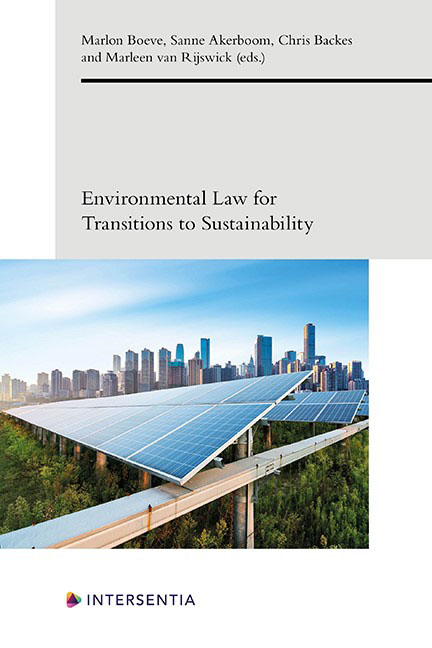Restoration by Private Entities in Indonesia: A Hope in Saving ‘Sinks’?
Published online by Cambridge University Press: 11 November 2021
Summary
INTRODUCTION
During the time of climate crisis, states throughout the world are expected to come up with noteworthy breakthroughs in achieving ambitious climate change mitigation (mitigation), as well as adaptation targets. In regard to mitigation measures, states are also encouraged to invite private entities to contribute toward the enhancement of mitigation efforts. One of the means to realise mitigation is by enhancing removal of emissions by sinks. The term ‘sinks’ refers to any kind of component or activity which is capable of sequestering emissions more than it emits. Among other things, it includes forests, peatlands and mangroves, which used to be ubiquitous in Indonesia. Since land-based business activities act as significant drivers of natural sinks’ degradation, it is important to ensure that they can equally contribute to restoration as part of the means to enhance emissions removal by sinks.
There are several discourses relating to legal measures and policies as one of the tools to support climate mitigation from the AFOLU (Agriculture, Forestry and Land-Use) sector, but responsibility-to-restore has never been exclusively addressed. Analysing the possibility of implementing responsibility-to-restore for the enhancement of climate mitigation is essential for, at least, these two reasons: (1) several cases of degraded forests and peatlands in Indonesia are due to the excess of natural-resources exploitation through massive naturalresources concessions; and (2) there is a window which enables responsibilityto-restore to significantly contribute toward the country's effort in enhancing removal by sinks, considering that the breadth of areas which were designated for concessions have contributed, albeit to different extents, to the degradation of the land-based sinks, such as forests and peatlands.
This chapter attempts to explore the possibility of using legal construction of responsibility-to-restore by private entities as one of the instruments which contribute to future climate mitigation measures. In addition, this contribution will assess to what extent that the current international and national legal regimes accommodate the attribution of responsibility to private entities in regard to restoration within mitigation frameworks. The assessment incorporates exploration of law pertaining to restoration and responsibility-to-restore by private entities, as well as the result of interaction of such law with environmental legal principles and the emerging international climate-change law.
- Type
- Chapter
- Information
- Environmental Law for Transitions to Sustainability , pp. 163 - 184Publisher: IntersentiaPrint publication year: 2021



